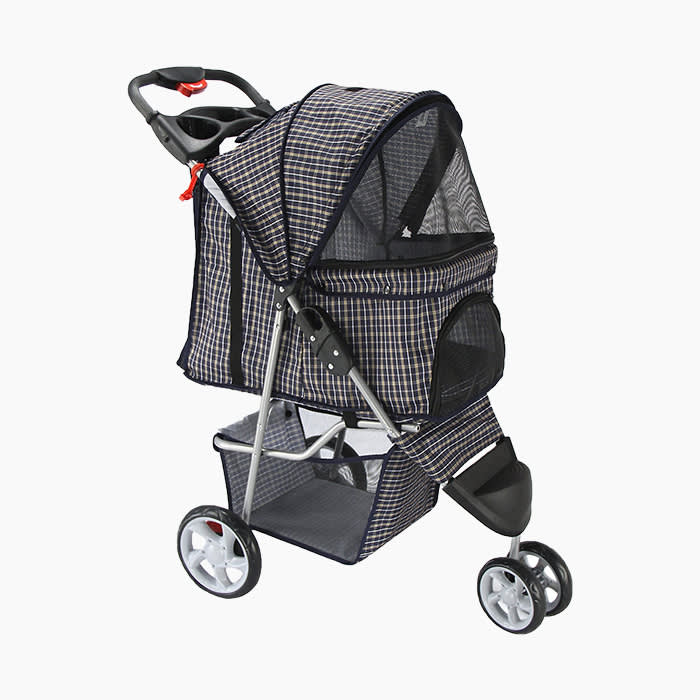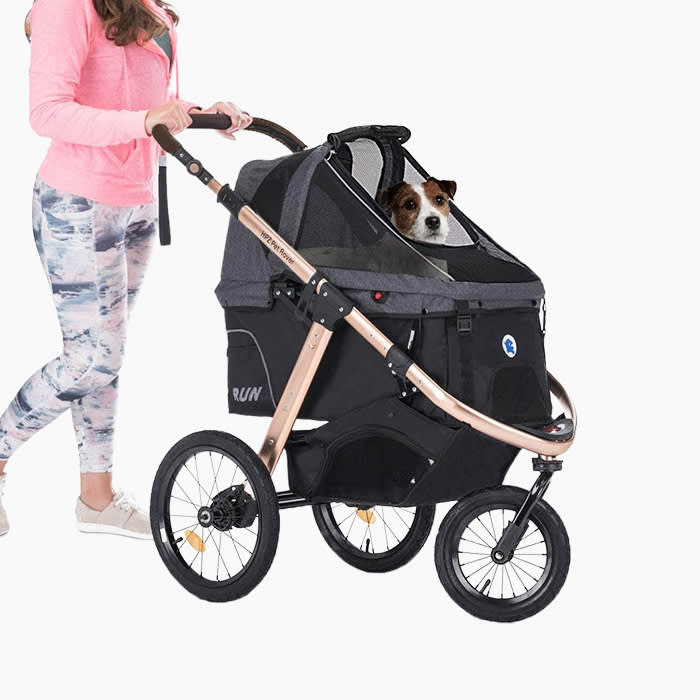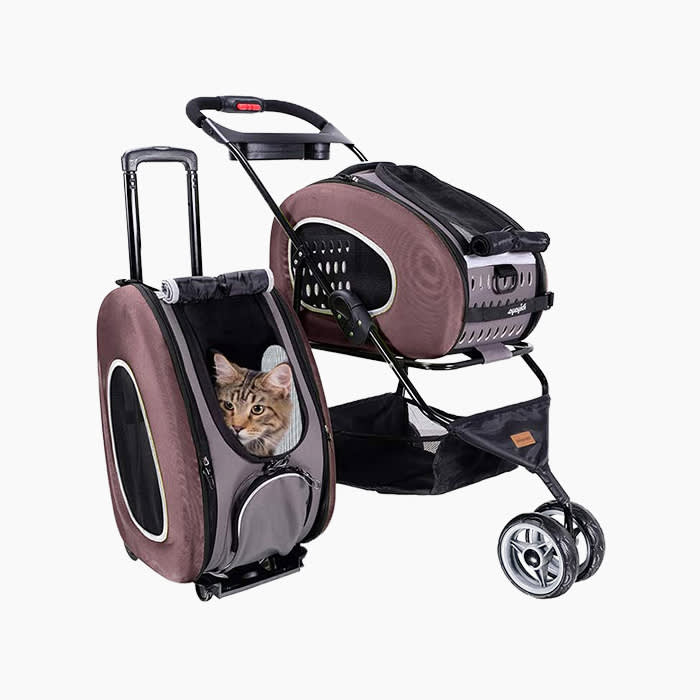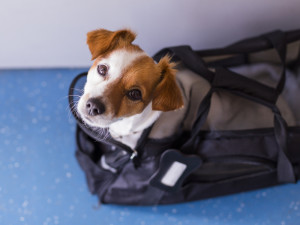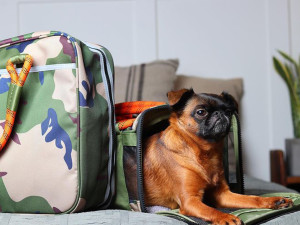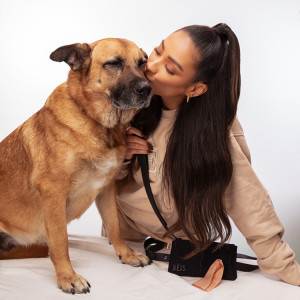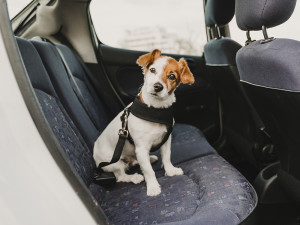Pet Stroller Training 101
Older dogs can still enjoy the benefits of a long walk — even without using their legs.
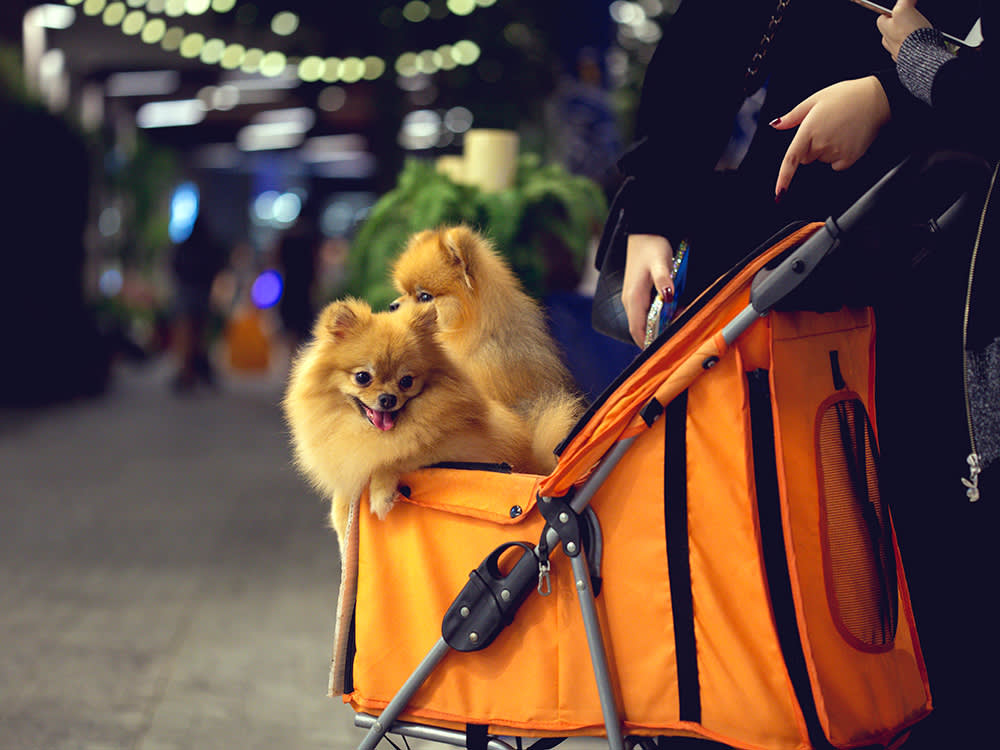
share article

Your pet wants you to read our newsletter. (Then give them a treat.)
Over the years, you’ll begin to notice a few changes to your dog beyond a greying muzzle. In their senior years, many dogs have issues that impact their physical abilities, whether due to arthritis, illness, or just because they are small and have trouble keeping up. Even when challenging to do so, it’s great to get out walking with your dog every day. The sights, smells, sounds, and tastes of the world activate the brain, so walks — even in a stroller — are a great way to keep your dog mentally fit.
Your dog might not initially like their stroller; that’s why you’ll need to work on training and slow introductions to their new wheels. With a bit of practice (and some patience), most dogs will eventually enjoy taking a ride in a pet stroller because it means they get to go out. There’s no better reward than a long walk to take in the smells.
Pet parents of senior dogs often find themselves asking, “How do you train your dog to use a pet stroller?” As with all dog training, the most important things to remember are taking it slow, making it positive, and working with your dog’s abilities. Of course, like many necessary challenges — it might be easier with a friend or partner.
How to Teach Your Dog to Ride in a Stroller
1. Get your dog comfortable with the stroller.
For many dogs, strollers can be scary because they are large and new. But this is a critical step, and I recommend doing it slowly. Bring the stroller somewhere your dog can easily investigate it, and be sure to lock the wheels so it doesn’t suddenly move.
2. Reward early to reinforce good behavior.
If your dog remains relaxed and calm near the stroller, you can also reward them with a few treats to ensure they maintain a positive experience. If your dog seems skittish or unsure, move farther away from the stroller until they are relaxed, then reward with treats (or a toy). Your goal here is to work towards the stroller slowly. Again, don’t rush this.
3. Start moving around (slowly).
Once your dog seems comfortable, unlock the wheels and have your partner move it around a bit. If your dog remains calm, reward them with a few treats. Just as suggested before, if your dog is timid, you’ll need to move farther away until your dog is comfortable and try again. The goal here will be to ensure your dog has a positive experience with the moving stroller.
4. Strap them in.
Now that your dog is happy in the presence of a stroller, you can pick them up and put them in. For larger dogs too heavy to be picked up, you can lure them into the stroller. Once your dog is in the stroller, offer treats. If your dog finds the experience scary or unpleasant, stop and try again later, working your way up to this point. You may want to do this several times over multiple days.
5. Introduce movement.
If your dog remains happy with all the previous steps, push the stroller around a bit with them inside while providing treats and praise often. If they remain calm and relaxed, feel free to continue but keep an eye on their stress levels. For timid dogs, take this step slowly.
6. Try for longer adventures.
Once your dog has a positive experience at home, take this show on the road. Start by choosing locations with few distractions that may cause unneeded stress. Now it’s time to get moving with your dog. While out on your next stroller walk, be sure to bring your dog’s collar and leash. Periodically stop to let your pup out to walk, stretch their legs and get a closer sniff. When they’ve tired themselves out, allow them back in the stroller for a cozy ride home.
Remember, when it comes to pet training, choose the methods that help your dog succeed. Always focus on positive reinforcement to encourage training and resist attempts to force them to move quicker than they are ready. Above all, enjoy it — stroller rides should be fun for both dogs and their humans.
Recommendations for Best Dog Strollers
Dog strollers are useful for traveling with your pet. Whether you’re looking for a dog stroller simply to take your dog out for a walk, for hiking, or to head to the beach, we have a list of dog strollers that will help ensure your pup can be included on your next adventure.
Btw, our editors (and their pets) picked out these products. They’re always in stock at the time we publish, but there’s a chance they’ll sell out. If you do buy through our links, we may earn a commission. (We’ve got a lot of toys to buy over here, you know?)
Which is The Best Stroller for Your Dog?
Because there are so many strollers available on the market, it might be a bit difficult finding the right stroller for you and your dog. You’ll need to consider what you’re planning on using the stroller for, your dog’s size, physical ability, and behavior. Here are a few things to think about when deciding on a pet stroller.
The Size:
Many dog strollers are geared towards small breed dogs (those less than 25 lbs.), so if your pup is a medium or large dog, your options will be more limited. Carriage-style strollers are more common for smaller dogs, whereas for larger dogs, you’re more likely to find a wagon.
The Safety:
If your dog is uh... not the mellow type, or maybe freaks out when they see squirrels, then you’ll want to make sure your stroller of choice has a sturdy leash clip for your pup’s harness — you’ll also need plenty of stroller training. Having a durable zipper enclosure might help too.
The Wheels:
Taking a stroll around the block on the pavement will be okay for a hard plastic wheel, but larger air-filled wheels will work better for smoothing out a rough ride on the trail or during a jog.
The Cost:
You might be looking for a cheap stroller, but if you plan to use your stroller often and for more than a couple of months, look into getting a quality, sturdy, durable pet stroller to ensure your pet’s safety and comfort.
The Extras:
If your dog is recovering from surgery, has arthritis, or has other mobility issues having a stroller with a low profile or an ease-of-access step could be a helpful addition — especially for large dogs. Keep an eye out for other convenience items like storage compartments, pockets, or one-handed closures.

Daniela Lopez
Daniela Lopez is a digital media specialist and long-time contributor to The Bark.
Related articles
![A dog sitting in a tote.]() opens in a new tab
opens in a new tabBag Check: This Versatile Carrier is Elevating Car Travel for Dogs
OWOW California’s new quilted carrier transforms into a car seat so your dog can ride shotgun.
![Dog sitting in a dog carrier]() opens in a new tab
opens in a new tabFlying With Your Dog? Don’t Just Wing It
Here’s a step-by-step guide, plus all the essentials, from airline-compliant carriers to calming chews.
![Dog sitting in their small size pet carrier]() opens in a new tab
opens in a new tabBehind the Brand: Roverlund
Vogue alum Jamies Knowles has elevated the pet carrier to a fashion-forward accessory.
![shay mitchell beis pet bag]() opens in a new tab
opens in a new tabShay Mitchell’s New BÉIS Pet Carriers Aren’t Just for the Jet Set
“I always felt bad when I saw animals in bags on an airplane because they just didn’t look cozy... I thought, there must be a better way to do this.”
![Dog seat-belted in a car]() opens in a new tab
opens in a new tab19 of the Best Car Travel Gear for Dogs
All the essentials you need to hit the road with your co-pilot, from dog seatbelts to crash-tested carriers.
